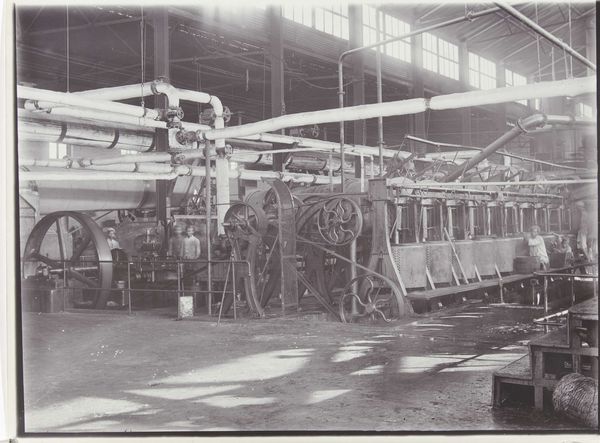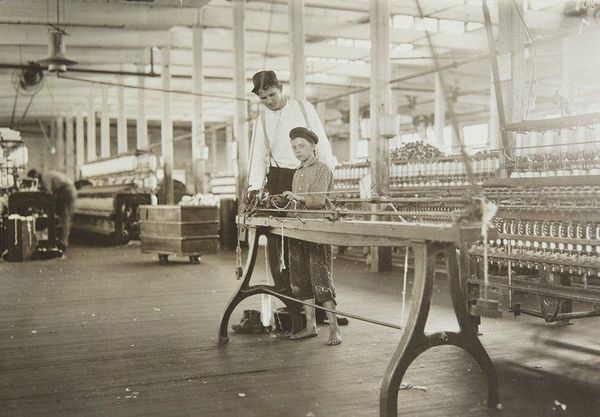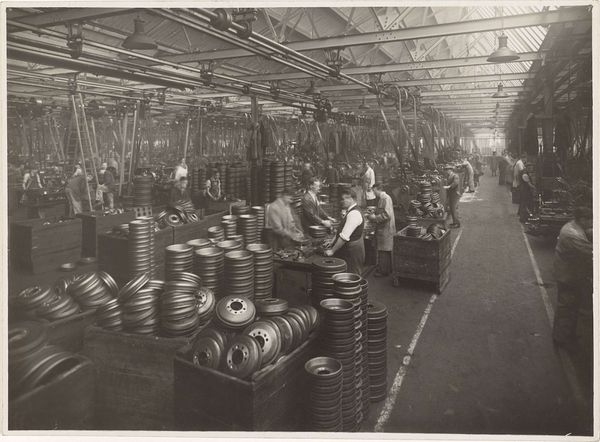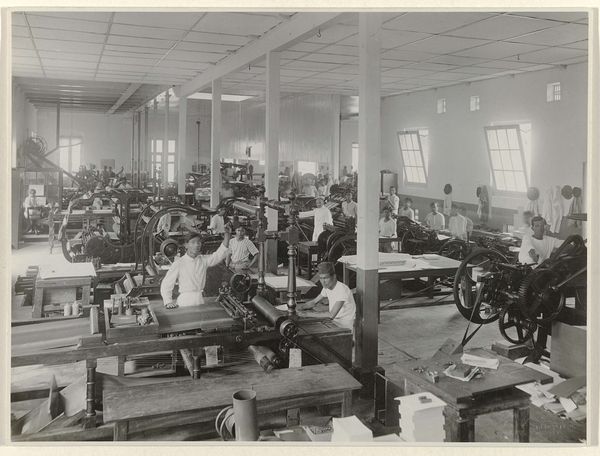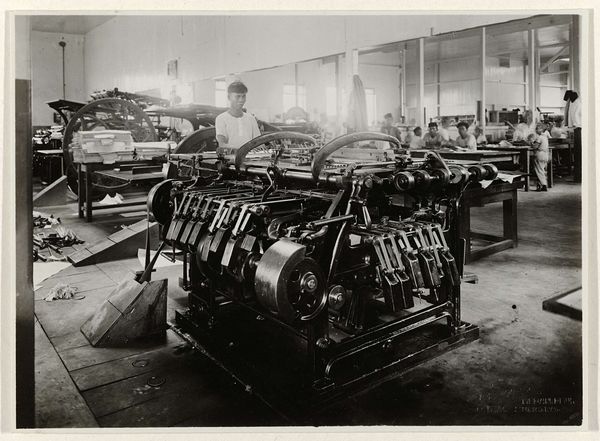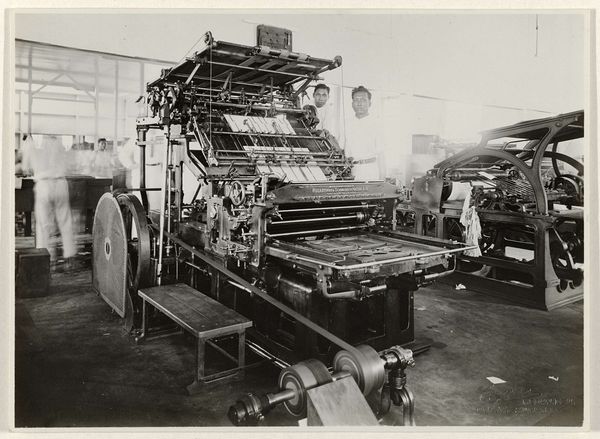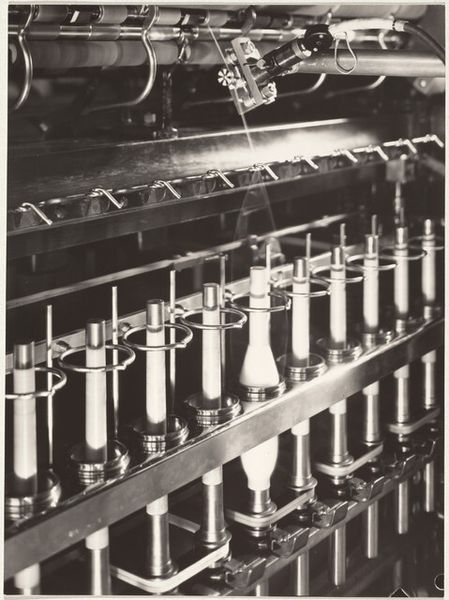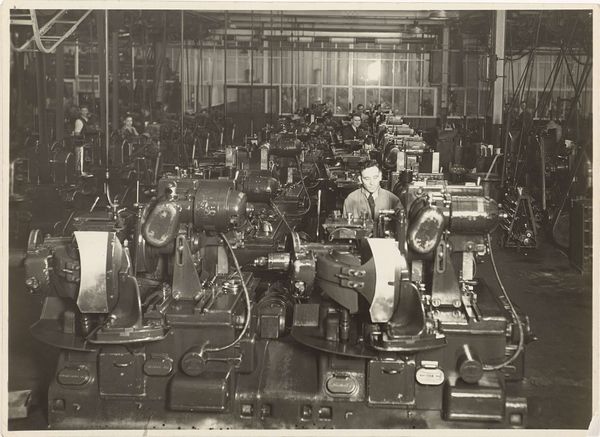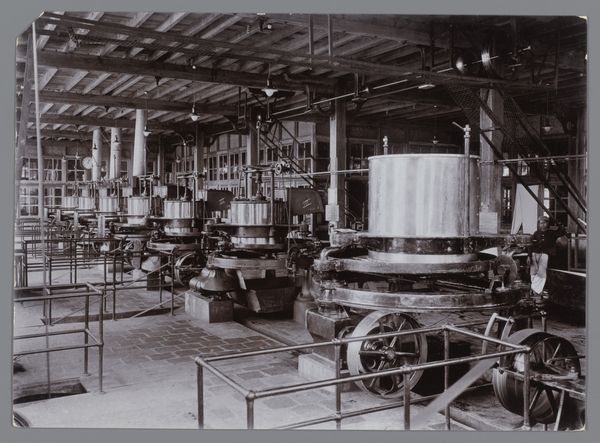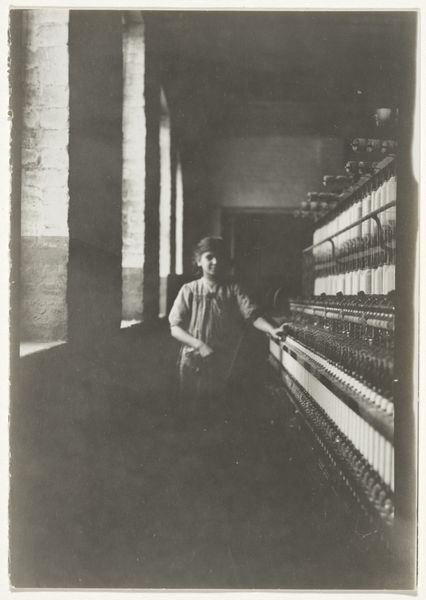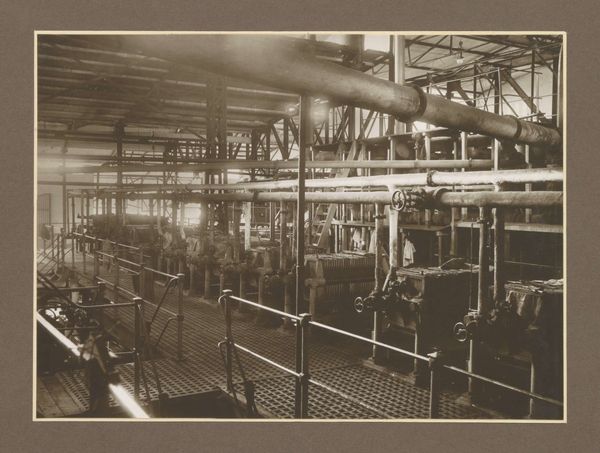
Dimensions: 5 x 6 9/16 in. (12.7 x 16.67 cm) (image, sheet)
Copyright: No Copyright - United States
Curator: Lewis Hine's "Year Old Spinner in a Cotton Mill," a gelatin-silver print from circa 1908, confronts us with a stark reality. What are your initial thoughts? Editor: It's visually arresting—the geometric precision of the machinery juxtaposed with the youthful form creates an immediate tension. The composition seems designed to highlight the human-machine interface, a kind of melancholic visual equation. Curator: Precisely. Hine's choice of gelatin-silver intensifies the stark contrast. The light reflecting off the metallic surfaces of the machinery almost becomes another character in the image, setting the tone. What does that suggest to you? Editor: Well, this particular process—gelatin silver printing—became widely adopted in the late 19th century due to its ability to produce highly detailed images quickly. It speaks volumes about the mass production Hine seems to critique within the mills. The choice underscores accessibility and widespread dissemination. Curator: I concur, the structural rigidity emphasizes this as well. Consider the organization, the lines—horizontal, vertical—confining her presence within the industrial architecture, visually underscoring the systemic nature of child labor. Editor: Exactly. Look at the materiality: cotton itself—the very material being processed—demands we consider labor exploitation at its origin. Hine forces us to consider production, from raw material to the photographic print. Curator: The lack of gradation is striking, wouldn't you say? Its greyscale lacks depth, reducing her youth to near anonymity. A potent commentary on industrialized exploitation, indeed, a calculated technique to evoke emotion and incite social change. Editor: Indeed. By presenting us with the unvarnished truth of cotton production, Hine lays bare uncomfortable realities and compels a re-evaluation of systems built upon exploitation. The image, born of the silver halide emulsion on gelatin, itself becomes a potent instrument of that challenge. Curator: It’s through considering both the formal elements and the materiality that one can begin to dissect the image and grasp the gravity of the situation it attempts to convey. Editor: I agree entirely. Seeing it this way deepens my understanding of Hine's commentary, linking the physical and historical realities within the aesthetic frame.
Comments
No comments
Be the first to comment and join the conversation on the ultimate creative platform.
